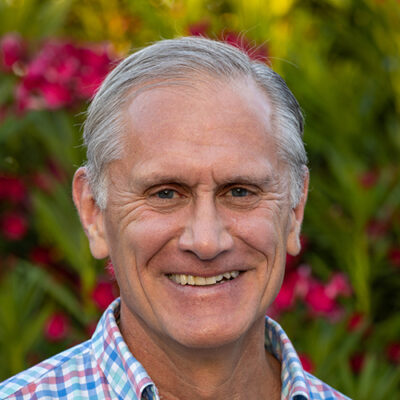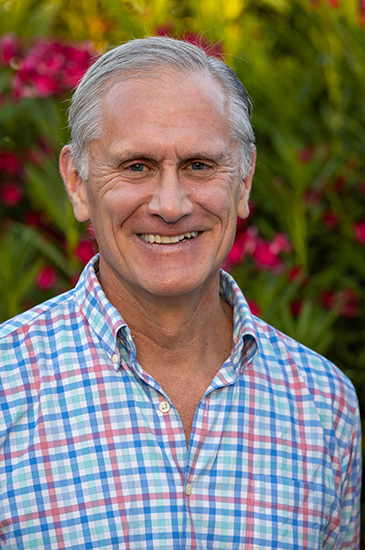Overview
Executive Summary
Located in the heart of the Owyhee Uplands 50 miles southwest of the farming community of Grand View, Deep Creek Ranch is a highly productive, seasonal cattle grazing operation that features 2,535± deeded acres in ten individual parcels of land surrounded by two Bureau of Land Management (BLM) grazing allotments permitted to the ranch and an associated State of Idaho grazing lease. The ranch’s deeded parcels are strategically positioned within the grazing allotments and control water sources and access points.
The Owyhee Uplands (or simply the “Owyhees”) is an immense, sparsely populated region spanning portions of Idaho, Nevada, and Oregon, where sheer canyon walls swell to broad sagebrush plateaus and juniper-covered hills that roll across one of the largest intact and undeveloped expanses of public land remaining in the Lower 48. Deep Creek represents the best of the Owyhees, encompassing robust grasslands, sage-covered mesas, juniper forests, aspen stands, red rock canyons, and numerous creeks, springs, and seasonal lakes.
The only building improvements on the ranch are two off-grid cow camps, each with a small cabin and horse pen. These camps provide basic living accommodations during the grazing and hunting seasons and are situated on separate deeded tracts connected by an internal ranch road. A set of loading corrals is located along the county road linking the ranch with Grand View and Jordan Valley, Oregon, to the northwest.
The ranch supports abundant big game, including elk, mule deer, and antelope, as well as upland birds and a host of non-games species. Deep Creek, Pole Creek, and Dickshooter Creek, all part of the Owyhee River system, offer fishing opportunities for native redband trout and introduced smallmouth bass. Because of its size, the ranch qualifies for landowner appreciation program tags for controlled hunts in highly coveted unit 42.
Just the Facts
- Highly productive, 500± head, seasonal cattle operation with excellent grazing and water resources
- 2,535± deeded acres in ten individual parcels encompassed by two single-user BLM grazing allotments and a state grazing lease
- 50 miles from Grand View and 100 miles from Boise
- Basic improvements include two off-grid, “buckaroo” cabins
- Extremely private backcountry setting with limited impacts from the public
- Pole Creek and Owyhee River Wilderness Areas border the ranch
- Excellent big game and upland bird hunting and fishing for redband trout and smallmouth
- Qualifies for landowner tags for controlled hunts in unit 42
- Elevation ranges from approximately 5,000 feet to 5,700 feet
- No conservation easement
- Annual property taxes are approximately $800
General Description
Deep Creek Ranch consists of 2,535± deeded acres in ten individual parcels surrounded by two BLM grazing allotments permitted to the ranch and an associated state grazing lease. Ranging in size from 20± acres to over 640 acres, the deeded tracts are strategically positioned within the grazing allotments and control water sources and access points. The largest deeded parcels are fenced separately from the BLM and state lands, adding flexibility to livestock management. The allotments, including the state lease, cover approximately 47,500 acres and extend for nearly 20 miles from Mud Flat Road at the north end to the confluence of Deep Creek and Dickshooter Creek at the south end. The allotments are flanked by broad tablelands and plateaus that give way to steep, rugged canyons through which Deep Creek, Pole Creek, and Dickshooter Creek flow year-round. Deep Creek Ranch is defined in large part by its abundance of water. Creeks, springs, meadows, reservoirs, playas, ponds, and dugouts are spread throughout the allotments and deeded properties supporting livestock and wildlife alike.
The primary entrance to Deep Creek is from Mud Flat Road through a locked gate located at the northernmost of the deeded parcels. Referred to as the Avery, this tract is also the largest of the private parcels and is home to one of the ranch’s two off-grid cow camps with a two-room log cabin, storage shed, and horse pen. An excellent road maintained by the ranch leads south from the Avery and provides vehicular access into the Big Springs allotment and to the other deeded parcels further south. The site of the second cow camp is located approximately eight miles south of the Avery on a deeded tract referred to as Indian Crossing. Highlighted by nearly two miles of Pole Creek, Indian Crossing consists of 471± acres and a two-room buckaroo cabin with metal siding and a horse pen. An ATV trail extends south from Indian Crossing and provides access to the south end of the Big Springs allotment, as well as a dramatic area referred to as Big Point above the confluence of Deep Creek and Dickshooter Creek.
Bordering the eastern side of the ranch and encompassing portions of the Big Springs allotment are two federal Wilderness Areas: the 12,000± acre Pole Creek Wilderness at the northeast end of the ranch and the 267,000± acre Owyhee River Wilderness at the southeast end. Designated by Congress in 2009, these Wilderness Areas underscore the remoteness and undeveloped nature of the region, and because Wilderness regulations prohibit motorized and mechanized uses, they also help to preserve the solitude and privacy of the ranch by limiting vehicular access into the area around Deep Creek. A third Wilderness Area, the 43,000± acre North Fork Owyhee Wilderness, is located just a mile northwest of the ranch and encompasses the headwaters of the North Fork Owyhee River as well as several tributaries to Deep Creek.
Broker's Comments
Set in one of the Intermountain West’s most dramatic landscapes, Deep Creek Ranch represents a special combination of privacy and seclusion, diverse scenery, quality hunting and outdoor recreation, and a highly productive, seasonal cattle operation with excellent grazing and water resources. Quality ranches, such as Deep Creek Ranch, rarely come for sale in the Owyhees.
Locale
Location
Deep Creek Ranch lies 50 miles southwest of Grand View and 100 miles south of the capital city of Boise. Access to Deep Creek is via Mud Flat Road, a seasonal county road that connects the ranch with Grand View and Jordan Valley, Oregon, to the northwest. Designated as the Owyhee Uplands National Backcountry Byway, Mud Flat Road is the primary route into central Owyhee County, a remote section of southwest Idaho that includes four federal Wilderness Areas and three federal Wild and Scenic Rivers. The city of Mountain Home, the site of Mountain Home Airforce Base, is located 25 miles north of Grand View and offers a variety of retail and commercial services as well as a general aviation airport with a 5,000-foot by 75-foot lighted runway and 24-hour Jet-A and 100LL fuel service. Boise is home to an excellent, mid-sized commercial airport with direct flights to cities across the United States.
Locale
The Owyhees is a vast region of southwestern Idaho, northern Nevada, and southeastern Oregon that is home to an undeveloped labyrinth of high desert plateaus and juniper-covered mountains incised by spectacular, sheer-walled river canyons. Often referred to as “America’s Outback,” the Owyhees encompass an area twice the size of Yellowstone National Park and are considered to be one of the most biologically rich desert ecosystems in the country. The area supports an array of important wildlife, including California big horn sheep, mule deer, elk, antelope, mountain lion, sage grouse, golden eagles, peregrine falcons, and Redband trout (a desert-tolerant strain of rainbow trout). There are few remaining places in the American West where native sagebrush and bunchgrass ecosystems have escaped development and fragmentation, and the Owyhees are one of them.
In addition to sustaining critical wildlife habitat, the complex geology of the Owyhees is unique and nationally significant. Carving through the heart of the region, the Owyhee, Bruneau, and Jarbidge Rivers and their various forks and tributaries twist northward toward the Snake River through steep and often vertical canyons typically composed of volcanic tuff and rhyolite extending from 400 to more than 1,000 feet deep. Geologists site the area as one of the largest concentrations of sheer-walled, volcanic-origin canyons in the western US.
From a cultural perspective, the Owhyees hold a profound significance for Native Americans who have called the region home for thousands of years. Evidence of their existence can be found in the many pictographs, petroglyphs, and artifacts that these original inhabitants left behind. Cattle ranching has a long history in the Owyhees as well, and remnant structures from the early days of the Idaho cowboy dot the area’s side canyons and river bottoms.
Climate
Elevations at Deep Creek range from approximately 5,000 feet at the south end of the Big Springs allotment at the confluence of Deep Creek and Dickshooter Creek to over 5,700 feet at the north end near the ranch entrance. The climate for the area is best described as semi-arid with total annual precipitation of approximately 15 inches. Summers tend to be very warm regularly reaching the 90s in July and August, while winters are cold and can experience heavy snowfall.
Property Details
Acreage (Deeded & Leased)
It is estimated that Deep Creek Ranch consists of 50,085± total acres. This amount breaks down as follows:
- 2,535± deeded acres (per the Owyhee County assessor)
- 46,270± acres under two BLM grazing permits
- 1,280± acres under a State of Idaho grazing lease
Deeded Acres: 2,535±
Total Leased Acres: 0±
Total Acres: 2,535±
Improvements
Deep Creek Ranch is minimally improved and includes two off-grid cow camps, one at the Avery and the other at Indian Crossing. These camps provide basic living accommodations during the grazing and hunting seasons, and each consists of a basic two-room cabin and a fenced horse pen. A set of loading corrals is located at the Avery along Mud Flat Road. A road maintained by the ranch provides vehicular access into the allotment and to other private tracts. The largest of the deeded properties are perimeter-fenced. Exterior and interior fencing is in place on portions of both allotments, while natural features, such as canyons and rock formations, aid in livestock management in numerous locations.
Water Rights
The ranch holds the following five stock water rights associated with the deeded parcels:
- 55-10338
- 55-10339
- 55-10340
- 55-10341
- 55-10342
These rights have been adjudicated through the Snake River Basin Adjudication and will convey to the new owner at closing. There are no irrigation rights associated with the ranch.
Mineral Rights
All mineral and subsurface rights owned by the seller will transfer to the new owner at closing.
Taxes
Annual property taxes are approximately $800.
Recreational Amenities
Wildlife Resources
The Owyhees are rich in wildlife, and the ranch is home to elk, mule deer, chukar, and sage grouse. Because of its size, Deep Creek is eligible for landowner appreciation program tags for controlled elk, deer, and antelope hunts in highly coveted unit 42. For the angling enthusiast, Deep Creek, Pole Creek, and Dickshooter Creek are year-round streams and provide habitat for both redband trout and smallmouth bass. Night skies at the ranch are among the darkest in the nation, offering stargazers unimpeded views of the galaxy.
Recreational Considerations
The privacy and solitude that one experiences at Deep Creek Ranch cannot be overstated, and opportunities for backcountry recreation and wilderness-quality outdoor experiences are available at every turn. The ranch and adjoining Wilderness Areas offer miles of hiking, horseback riding, hunting, fishing, and other pursuits in a landscape where it is the rare exception to come across another human.


















































